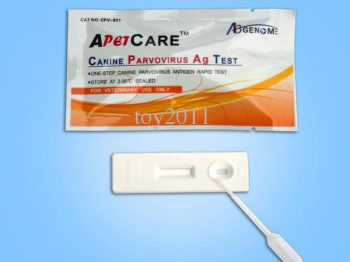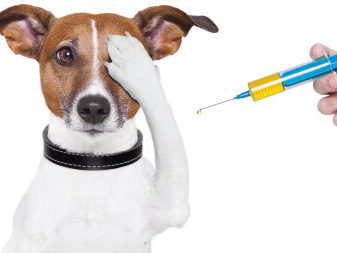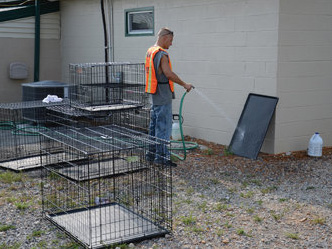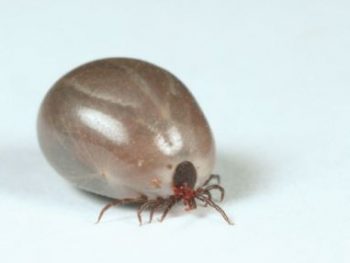A quick reference of dog related topics…
Dog “Sayings & Quotes”
[su_accordion] [su_spoiler title=”Our favorite Dog Quotes…” style=”fancy”]
“A dog is the only thing on earth that loves you more than he loves himself.” – Josh Billings
“If there are no dogs in Heaven, then when I die I want to go where they went.” – Will Rogers
“The only creatures that are evolved enough to convey pure love are dogs and infants.” – Johnny Depp
We’ve begun to long for the pitter-patter of little feet – so we bought a dog.
Well, it’s cheaper, and you get more feet. – Rita Rudner
“The dog is a gentleman; I hope to go to his heaven not man’s.” – Mark Twain
“The average dog is a nicer person than the average person.” – Andy Rooney
“Dogs are not our whole life, but they make our lives whole.” – Roger A. Caras
“The better I get to know men, the more I find myself loving dogs.” – Charles de Gaulle
“Dogs have given us their absolute all. We are the center of their universe. We are the focus of their love and faith and trust. They serve us in return for scraps. It is without a doubt the best deal man has ever made. ” – Roger A. Caras
“If a dog will not come to you after having looked you in the face, you should go home and examine your conscience.” – Woodrow Wilson
“The more boys I meet the more I love my dog.” – Carrie Underwood
“If you don’t own a dog, at least one, there is not necessarily anything wrong with you, but there may be something wrong with your life.” – Roger A. Caras
“I care not for a man’s religion whose dogs and cats are not the better for it.” – Abraham Lincoln
“Dogs do speak, but only to those who know how to listen.” – Orhan Pamuk
“If slaughterhouses had glass walls, the whole world would be vegetarian.” – Linda McCartney
“Dogs’ lives are too short. Their only fault, really.” – Agnes Sligh Turnbull
“You can usually tell that a man is good if he has a dog who loves him.” – W. Bruce Cameron
“Men are like dogs,” Stacy was fond of saying. And she usually went on to add that, like dogs, they all took up too much space on the bed, and they always went for the crotch.” – Lisa Kleypas
“A lot of shelter dogs are mutts like me.” – Barack Obama
“Money will buy a pretty good dog, but it won’t buy the wag of his tail.” – Josh Billings
“No matter how little money and how few possessions you own, having a dog makes you feel rich.” – Louis Sabin
The most affectionate creature in the world is a wet dog. – Ambrose Bierce
Properly trained, a man can be dog’s best friend. – Corey Ford
A person who has never owned a dog has missed a wonderful part of life. – Bob Barker
The worst sin towards our fellow creatures is not to hate them, but to be indifferent to them. That’s the essence of inhumanity. – George Bernard Shaw
The love for animals, enhances the cultural level of the people. – F. Salvochea
It doesn’t matter if an animal can reason. It matters only that it is capable of suffering and that is why I consider it my neighbor. – Albert Schweitzer
We can judge the heart of a man according to his love for animals. – Immanuel Kant
A well-trained dog will make no attempt to share your lunch. He will just make you feel so guilty that you cannot enjoy it. – Helen Thomson
The average dog has one request to all humankind. Love me. – Helen Exley
“Scratch a dog and you’ll find a permanent job.” – Franklin P. Jones
“The greatness of a nation and its moral progress can be judged by the way its animals are treated” – Mahatma Gandhi
[/su_spoiler]
[su_spoiler title=”Dog sayings – anonymous” style=”fancy”]A house is never lonely where a loving dog waits
If I had a dollar for everytime my dog made me smile I would be a millionaire.
In a perfect world every dog would have a home and every home would have a dog.
Dogs have a habit of finding the people who need them most
Rescued is my favorite breed.
Dogs leave paw prints on your heart
I’m sorry I was thinking about dogs AGAIN
He is your friend, your partner, your defender, your dog. You are his life, his love, his leader. He will be yours, faithful and true, to the last beat of his heart.
The purity of a person’s heart can be quickly measured by how they regard animals.[/su_spoiler]
[/su_accordion]
Serious Dog Diseases…
[su_accordion]
[su_spoiler title=”What is Parvovirus in Dogs…” style=”fancy”]
What is Parvovirus in dogs…
Canine parvovirus is a highly contagious viral disease that can produce a life-threatening illness. The virus attacks rapidly dividing cells in a dog’s body, most severely affecting the intestinal tract. Parvovirus also attacks the white blood cells, and when young animals are infected, the virus can damage the heart muscle and cause lifelong cardiac problem
[su_table]
| What Are the General Symptoms of Parvovirus?The general symptoms of parvovirus are lethargy, severe vomiting, loss of appetite and bloody, foul-smelling diarrhea that can lead to life-threatening dehydration.How Is Parvovirus Transmitted?Parvovirus is extremely contagious and can be transmitted by any person, animal or object that comes in contact with an infected dog’s feces. Highly resistant, the virus can live in the environment for months, and may survive on inanimate objects such as food bowls, shoes, clothes, carpet and floors. It is common for an unvaccinated dog to contract parvovirus from the streets, especially in urban areas where there are many street dogs. |
 Diarrhea Diarrhea |
| How Is Parvovirus Diagnosed?Veterinarians diagnose parvovirus on the basis of clinical signs and laboratory testing. The Enzyme Linked ImmunoSorbant Assay (ELISA) test has become a common test for parvovirus. The ELISA test kit is used to detect parvovirus in a dog’s stools, and is performed in the vet’s office in about 15 minutes. Because this test is not 100% sensitive or specific, your veterinarian may recommend additional tests and bloodwork.Which Dogs Are Prone to Parvovirus?Puppies, adolescent dogs and canines who are not vaccinated are most susceptible to the virus. The canine parvovirus affects most members of the dog family (wolves, coyotes, foxes, etc.). Breeds at a higher risk are Rottweilers, Doberman pinschers, Labrador retrievers, American Staffordshire terriers and German shepherds. |
 Parvo test kit Parvo test kit |
| How Can Parvovirus Be Prevented?You can protect your dog from this potential killer by making sure he’s up-to-date on his vaccinations. Parvovirus should be considered a core vaccine for all puppies and adult dogs. It is usually recommended that puppies be vaccinated with combination vaccines that take into account the risk factors for exposure to various diseases. One common vaccine, called a “5-in-1,” protects the puppy from distemper, hepatitis, leptospirosis, parvovirus and parainfluenza.Generally, the first vaccine is given at 6-8 weeks of age and a booster is given at four-week intervals until the puppy is 16-20 weeks of age, and then again at one year of age. A puppy’s vaccination program is not complete before four months of age. Older dogs who have not received full puppy vaccination series may be susceptible to parvovirus and should also receive at least one immunization. Consult with your veterinarian about how often your dog will need to be revaccinated. |
 Dogs must be vaccinated. Dogs must be vaccinated. |
| Because parvovirus can live in an environment for months, you will want to take extra care if there has been an infected dog in your house or yard. Some things are easier to clean and disinfect than others-and even with excellent cleaning, parvovirus can be difficult to eradicate. Parvo is resistant to many typical disinfectants. A solution of one part bleach to 32 parts water can be used where organic material is not present. The infected dog’s toys, food dish and water bowl should be properly cleaned and then disinfected with this solution for 10 minutes. If not disinfected, these articles should be discarded. You can also use the solution on the soles of your shoes if you think you’ve walked through an infected area. Areas that are harder to clean (grassy areas, carpeting and wood, for example) may need to be sprayed with disinfectant, or even resurfaced. |
 The virus is hard to kill. The virus is hard to kill. |
| How Can Parvovirus Be Treated?Although there are no drugs available that can kill the virus yet, treatment is generally straightforward and consists of aggressive supportive care to control the symptoms and boost your dog’s immune system to help him win the battle against this dangerous disease. Dogs infected with parvovirus need intensive treatment in a veterinary hospital, where they receive antibiotics, drugs to control the vomiting, intravenous fluids and other supportive therapies. Should your dog undergo this treatment, be prepared for considerable expense-the average hospital stay is about 5-7 days.Please note that treatment is not always successful-so it’s especially important to make sure your dog is vaccinated. |
 Hospitalised for 5-7 days. Hospitalised for 5-7 days. |
[/su_table]
[/su_spoiler]
[su_spoiler title=”Canine Distemper in Dogs…” style=”fancy”]
What is Distemper in dogs…
Canine distemper is a contagious and serious viral illness with no known cure. The disease affects dogs, and certain species of wildlife. Canine distemper belongs to the Morbillivirus class of viruses, and is a relative of the measles virus, which affects humans, the Rinderpest virus that affects cattle, and the Phocine virus that causes seal distemper. Young, unvaccinated puppies and non-immunized older dogs tend to be more susceptible to the disease.
[su_table]
| Symptoms and Types. The virus, which is spread through the air and by direct or indirect (i.e. utensils, bedding) contact with an infected animal, initially attacks a dog’s tonsils and lymph nodes and replicatesitself there for about one week. symptons are runny nose & thinkening of the nostrils. It then attacks the respiratory, urogenital, gastrointestinal, and nervous systems.In the initial stages of Canine Distemper, the major symptoms include high fever (≥103.5 ° F, or 39.7° C), reddened eyes, and a watery discharge from the nose and eyes. |
 Nasal Discharge Nasal Discharge |
| Symptoms. An infected dog will become lethargic and tired, and will usually become anorexic. Persistent coughing, vomiting, and diarrhea may also occur. In the later stages of the disease, the virus starts attacking the othersystems of the dog’s body, particularly the nervous system. The brain and spinal cord are affected and the dog may start having fits, seizures, paralysis, and attacks of hysteria.Canine distemper is sometimes also called “hard pad disease” because certain strains of the virus can cause an abnormal enlargement or thickening of the pads or nose of an animal. In dogs oranimals with weak immune systems, death may result two to five weeks after the initial infection. |
 Thickened Nostrils Thickened Nostrils |
| Causes & Diagnosis. Bacterial infections of the respiratory or gastrointestinal systems may also increase an animal’s vulnerability to the disease. Non-immunized dogs like street dogs that come into any kind of contact with an infected animal carry a particularly high risk of contracting the disease.Canine distemper is diagnosed with biochemical tests and urine analysis, which may also reveal a reduced number of lymphocytes, the white blood cells that function in the immune system in the initial stages of the disease (lymphopenia). |
 Young & Old dogs are most at risk. Young & Old dogs are most at risk. |
| Treatment. Unfortunately, there is no cure for canine distemper. Treatment for the disease, therefore, is heavily focused on alleviating the symptoms. If the animal has become anorexic or has diarrhea, intravenous supportive fluids may be given. Discharge from the eyes and nose must be cleaned away regularly. Antibiotics may be prescribed to control the symptoms caused by a secondary bacterial infection. There are no antiviral drugs that are effective in treating the disease. |
 Stained & deformed teeth. Stained & deformed teeth. |
| Living and Management. In the more acute stages of canine distemper, it is necessary to monitor for development of pneumonia or dehydration from diarrhea. The central nervous system (CNS) must also be monitored because seizures and other neural disturbances may occur. A dog’s chances for surviving canine distemper will depend on the strain of the virus and the strength of the dog’s immune system. Recovery is entirely possible, although seizures and other fatal disturbances may occur two to three months after recovery. Fully recovered dogs do not spread or carry the virus.Dog that have recovered from distemper can often have a tremor of the jaw, brown stained deformed teeth, a whole body tremor, epilepsy & distorted sculls have been seen. |
 Death rates as high as 90%. Death rates as high as 90%. |
[/su_table]
Prevention
The best prevention for canine distemper is routine vaccinations and immediate isolation of infected animals. Special care must be taken to protect new-born pups from exposure, since they are especially susceptible to the disease.[/su_spoiler]
[su_spoiler title=”Rabies in Dogs” style=”fancy”]
What is Rabies in dogs…
Rabies is a severe, and often fatal, virus that specifically affects the gray matter of the dog’s brain and its central nervous system (CNS). The primary way the rabies virus is transmitted to dogs is through a bite from a disease carrier. Infectious virus particles are retained in a rabid animal’s salivary glands to better disseminate the virus through their saliva.
[su_table]
| Once the virus enters the dog’s body, it replicates in the cells of the muscles, and then spreads to the closest nerve fibers, traveling from there to the CNS via fluid within the nerves. The virus can take up to a month to develop, but once the symptoms have begun, the virus progresses rapidly.Symptoms and TypesThere are two forms of rabies: paralytic and furious. In the early symptom (prodomal) stage of rabies infection, the dog will show only mild signs of CNS abnormalities. This stage will last from one to three days. Most dogs will then progress to either the furious stage, the paralytic stage, or a combination of the two, while others succumb to the infection without displaying any major symptoms. |
 Commonly transmitted by a bite Commonly transmitted by a bite |
| Furious rabies is characterized by extreme behavioral changes, including overt aggression and attack behavior. Paralytic rabies, also referred to as dumb rabies, is characterized by weakness and loss of coordination, followed by paralysis.This is a fast-moving virus. If it is not treated soon after the symptoms have begun, the prognosis is poor. Therefore, if your dog has been in a fight with another animal, or has been bitten or scratched by another animal, or if you have any reason to suspect that your pet has come into contact with a rabid animal (even if your pet has been vaccinated against the virus), you must take your dog to a veterinarian for preventive care immediately. |
 Agressive Behavior Agressive Behavior |
The following are some of the symptoms to watch for in your dog:Pica, Fever, Seizures, Paralysis, Hydrophobia, Jaw is dropped, Inability to swallow, Change in tone of bark, Muscular lack of coordination, Unusual shyness or aggression, Excessive excitability
Constant irritability/changes in attitude and behavior
Paralysis in the mandible and larynx, Excessive salivation (hypersalivation), or frothy saliva |
 Dogs & Cats are at risk. Dogs & Cats are at risk. |
| Causes It is transmitted through the exchange of blood or saliva from an infected animal, and very rarely through breathing in the escaping gasses from decomposing animal carcasses. Contracting the virus in this way is rare but it can occur, often in caves with large populations of bats, where the virus is widespread. This may be a concern for hunting dogs.DiagnosisIf you suspect your dog has rabies, call your veterinarian immediately. If it is safe to do so, cage, or otherwise subdue your dog, and take it to a veterinarian to be quarantined. If your pet is behaving viciously, or is trying to attack, and you feel you are at risk of being bitten or scratched, you must contact animal control to catch your dog for you.Your veterinarian will keep your dog quarantined in a locked cage for 10 days. This is the only acceptable method for confirming suspected rabies infection. |
 The animal must be Quarantined. The animal must be Quarantined. |
| Rabies can be confused with other conditions that cause aggressive behavior, so a laboratory blood analysis must be conducted to confirm the presence of the virus. However, blood testing for the virus is not veterinary procedure.Diagnosis is done using a post-mortem direct fluorescence antibody test performed by an approved laboratory for rabies diagnosis. Your veterinarian will collect fluid samples if your dog dies while in quarantine, or if it begins showing progressive signs of rabies; in which case, your veterinarian will opt to put your dog to sleep (or euthanize it). |
 Vacination is the only protection.. Vacination is the only protection.. |
[/su_spoiler]
[su_spoiler title=”Protecting Your Pets from Mesothelioma & Asbestos Exposure” style=”fancy”]
Protecting your Pets from Mesothelioma & Asbestos Exposure.
It’s bad enough when your loved one is diagnosed with mesothelioma, but you don’t expect that your pet can develop the same rare cancer.
Unlike many health conditions, mesothelioma is not unique to just humans. While it’s uncommon, your family pets, including cats and dogs, are at risk of developing the aggressive, asbestos-related cancer. To learn more about this disease & it’s prevention in dogs & cats please read the following article by the Mesothelioma Center. https://www.asbestos.com/blog/2015/11/09/protecting-pets-mesothelioma-asbestos-exposure/
[/su_table][/su_spoiler] [/su_accordion]
Common Medical problems in dogs…
[su_accordion] [su_spoiler title=”Blood Parasites…” style=”fancy”]
Blood Parasites in dogs…
There are many parasites that can cause ill health in dogs. Heartworm is one of the more well known, which is carried by mosquitoes. They are many others you may not have heard of.
[su_table]
B. canis — A large piroplasm that infects dogs, B. canis is distributed worldwide, and there are 3 subspecies based on genetic, biologic, and geographic data. B. canis vogeli has been reported in the U.S., Africa, Asia, and Australia.
B. canis rossi is the most virulent and is present in Africa. B. canis canis has been reported in Europe.
Recent studies have identified at least three genetically distinct small (2–5 µm) piroplasms that can infect dogs.
B. gibsoni — small piroplasm that infects dogs; worldwide distribution; emerging disease in the U.S.
B. conradae — small piroplasm that infects dogs; only reported in California
Theileria annae (Spanish dog piroplasm) — small piroplasm that infects dogs; reported in Spain and other parts of Europe
Babesia sp. (Coco) — large piroplasm identified in dogs with a surgically removed spleen, and immune suppressed dogs in the U.S. |
 Babesia infection in blood. Babesia infection in blood. |
Symptoms and TypesLack of energy
Lack of appetite
Pale gums
Fever
Enlarged abdomen
Colored urine
Yellow or orange skin
Weight loss
Discoloured stool |
 Weight loss Weight loss |
Causes
Background history of tick attachment
Immune suppression may cause clinical signs and increased parasitemia (parasite infection in the blood) in chronically infected dogs
History of a recent dog-bite wound
Recent blood transfusionDiagnosis
You will need to give a thorough history of your dog’s health, including a background history of symptoms, and possible incidents that might have precipitated this condition. Your veterinarian will perform a complete physical exam on your dog. A blood chemical profile, a complete blood count, a urinalysis and an electrolyte panel will be conducted. |
 Ticks carry many parasites. Ticks carry many parasites. |
| Your veterinarian may use a Wright’s stain to stain a blood sample for microscopic examination, since this will allow for your doctor to distinguish blood cells, making an infection of the blood more readily apparent. Immunofluorescent antibody (IFA) tests for antibodies in the serum that react with Babesia organisms may also be performed. Cross-reactive antibodies can prevent the differentiation of species and subspecies. However, some infected animals, particularly young dogs, may have no detectable antibodies.PCR (polymerase chain reaction) tests for the presence of Babesia DNA in a biological sample can differentiate subspecies and species and are more sensitive than microscopy. |
 Remove ticks & use protection. Remove ticks & use protection. |
| TreatmentMost patients can be treated on an outpatient basis, but severely ill patients, especially those requiring fluid therapy or blood transfusions, should be hospitalized. |

Heartworm can kill. |
Your veterinarian will want to monitor your dog’s progress, and will schedule regular follow-up appointments to repeat blood chemical profiles, complete blood counts, urinalyses and electrolyte panels. Two to three consecutive negative PCR tests beginning two months post-treatment should be performed to rule out treatment failure and persistent parasitemia.
In addition, when one dog housed in a multi-dog kennel is diagnosed with babesiosis, all of the dogs in that kennel will need to be screened since there is a high percentage of carrier animals in kennel situations.
If your dog is spending time in an area that is a known tick habitat, prevention is the best course of action, use a tick prevention medication to protect your animal. Check your dog daily for the presence of ticks and remove them promptly. The longer a tick stays on the body, the more likely the transmission of the parasite is to occur.
[/su_table]
[/su_spoiler]
[su_spoiler title=”Acute Renal failure…” style=”fancy”]
Chronic Renal Failure in Dogs…
Nine in every 1,000 dogs that are examined suffer from chronic renal disease. And while dogs of any age can be diagnosed with the kidney disease, it is more commonly seen in older dogs.
[su_table]
| Failure of the kidney — which among other things regulates blood pressure, blood sugar, blood volume, water composition in the blood, and pH levels, and produces red blood cells and certain hormones — can take place so slowly, that by the time the symptoms have become obvious, it may be too late to treat the condition effectively. Often, the kidney will find ways to compensate as it loses functionality over the course of months, or even years.While chronic renal failure cannot be reversed or cured, treatment and management aimed at reducing the contributing factors and symptoms can slow its progression.Chronic renal failure can affect both dogs and cats. If you would like to learn more about how this disease affects cats, please visit this page in the PetMD health library. |
 Location of kidneys. Location of kidneys. |
Symptoms often occur gradually over an extended petriod of time. In addition, symptoms may vary and not all of those listed below will be seen in every dog:
Vomiting
Lethargy
Diarrhea
Constipation
Depression
Weight loss
Increased thirst
Lack of appetite (anorexia)
Acute blindness
Seizures and comas
Blood in the urine (hematuria)
An increase in the frequency and amount of urination |
 Lethargy Lethargy |
Causes
Causes of kidney failure can include kidney disease, urinary blockage (obstruction of the urinary tract or of the ureters), certain prescription medications, lymphoma, diabetes mellitus, and genetic (hereditary) factors.The following breeds are prone to chronic renal failure:
Samoyed
Bull Terrier
Cairn Terrier
German Shepherd
English Cocker Spaniel |
 Increased Thirst. Increased Thirst. |
DiagnosisYour dog will undergo a complete blood profile, including a chemical blood profile, a complete blood count, and a urinalysis. Dogs with chronic renal failure may have anemia, abnormal electrolyte levels, and elevated blood pressure. The levels of certain protein enzymes and chemicals such as creatinine and blood urea nitrogen (BUN) will also be high.Another good indicator of chronic renal failure is urine that is neither concentrated or dilute, thus indicating the kidney’s inability to process the urine correctly. X-ray or ultrasound imaging may also be used to observe the size and shape of the dog’s kidney(s) to see if there are any visibly noticeable abnormalities. Often, chronic renal failure causes kidneys to become abnormally small.
Dogs suffering from long-term kidney failure will often undergo fluid therapy to assist with depleted body fluid levels (dehydration). Dietary protein is sometimes restricted, since it can further compound the problem. |
 Test for Renal failure. Test for Renal failure. |
| Although there is no cure for chronic renal failure, there are numerous steps that can be taken to minimize the symptoms and slow the progression of the disease. For instance, feeding your dog a specially formulated kidney diet, or other diet low in protein, phosphorus, calcium, and sodium, is usually very helpful. These specially formulated foods will usually have a higher level of potassium and polyunsaturated fatty acids (omega 6 and omega 3 fatty acids), both have shown to be beneficial to the kidneys. The downside is that these foods are not flavorful.If your dog is resistant to its new diet, small amounts of tuna juice, chicken stock, or other flavor enhancers can be used with guidance from your veterinarian.Maintaining hydration is critical. You will need to ensure your dog always has an adequate amount of clean water to drink. If your dog has been diagnosed with dehydration, supplemental fluids may be given intravenously or under the skin (subcutaneously). |
 Special Renal diet will help. Special Renal diet will help. |
Living and Management
Chronic renal failure is a progressive disease. Dogs experiencing this disease should be monitored on an ongoing basis, with frequent check-ups to ensure that it is not necessary to make changes to medications or diet.
Your dog’s prognosis will depend on the severity of the disease and its stages of progression, but a few months, or a few years of stability may be expected, with the proper treatment. The best way to manage this disease is to follow through with the treatments your veterinarian prescribes.
Pet owners are advised not to breed dogs that have developed chronic kidney disease.
Prevention – There are currently no known methods for preventing kidney disease.
[/su_table]
[/su_spoiler]
[su_spoiler title=”Liver Disease in Dogs…” style=”fancy”]
Liver Disease in Dogs…
The liver is an important organ for your dog. It helps with digestion and blood clotting, and it removes toxins from his system. If it’s not working right, it can make your companion sick. But liver disease can often be treated and managed.
[su_table]
| Are You Feeding Your Dog Well? |
 The correct food makes all the difference. The correct food makes all the difference. |
| Symptoms – It’s easy to miss the symptoms of liver disease. They’re similar to those for other problems.Your dog’s symptoms may include:Loss of appetite, Weight loss, Vomiting or diarrhea, Increased thirst, An unstable walk, Increased need to pee, Confusion, Yellowish eyes, tongue, or gums (jaundice), Signs of weakness, Blood in his pee or poop, Seizures, Ascites (a build-up of fluid in the belly)If your dog’s liver disease isn’t caught early, it can lead to a serious brain condition called hepatic encephalopathy. |
 Loss of appetite. Loss of appetite. |
| What Causes Liver ProblemsSometimes liver disease can happen as a result of aging. Sometimes it’s genetic. But it can also be brought on by infection or trauma to the area. Some diseases and medications can hurt your dog’s liver. |
 Less fatty food. Less fatty food. |
Other causes of liver disease may include:Some plants and herbs such as ragwort, certain mushrooms, and blue-green algae
Molds that grow on corn
Untreated heartworms
Diabetes
Issues with the pancreas
Long-term use of painkillers
Fatty foods
If your dog has some symptoms of liver problems, your vet may ask you about his diet and medications. The vet may want to do blood tests and X-rays or an ultrasound to get a picture of what is going on with your dog’s liver. He may also want to take a biopsy — remove a small tissue sample for testing. |
 Some plants can cause problems. Some plants can cause problems. |
TreatmentYour dog’s treatment will depend on how soon you catch the problem and what caused it. A vet will need to see how much damage there is to the liver.Diet changes often help. Your dog may need a special diet to make sure he’s getting the nutrients and calories needed to help his liver.
Supplements such as SAM-E or milk thistle may help the liver recover.
Medications may help control his liver problems. You may also need to change your dog’s other medications or reduce how much he takes.
Surgery may be an option for dogs with tumors or cysts.
Work closely with your vet to manage the disease and avoid liver failure. |
 Milk thistle can help.. Milk thistle can help.. |
Prevention
You can help your dog avoid getting liver disease. Take him to the vet for his yearly exams and vaccinations. Make sure your vet is aware of any drugs or supplements he may take. Be mindful of what you feed your dog. Fatty foods can hurt his liver. And don’t let your dog roam free in areas where there may be poisonous plants or insects.
[/su_table]
[/su_spoiler] [/su_accordion]
ALTHOUGH CTVT TUMORS CAN LOOK VERY BAD THEY ARE CURABLE IN MOST INSTANCES. With your help most dogs suffering from TVT can be cured…
Disclaimer: The content above is general information only, if you need expert help you must consult a qualified vet who will examine your pet & provide the required treatment.
 Nasal Discharge
Nasal Discharge Thickened Nostrils
Thickened Nostrils Young & Old dogs are most at risk.
Young & Old dogs are most at risk. Stained & deformed teeth.
Stained & deformed teeth. Death rates as high as 90%.
Death rates as high as 90%.

























1 Comment